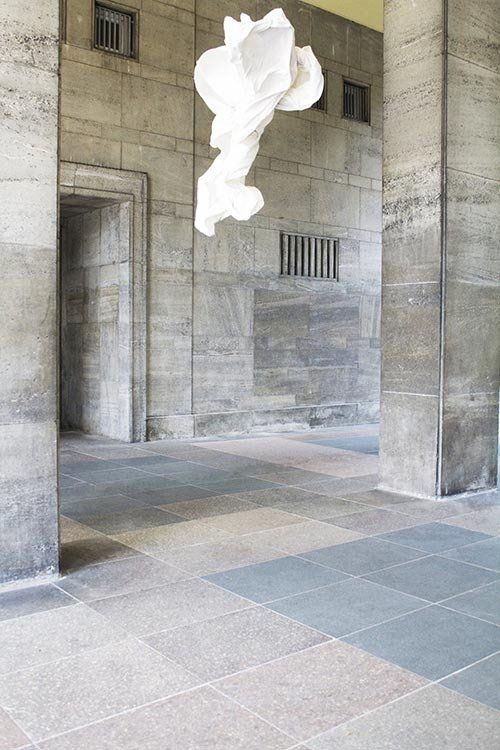INTERVIEW
B : Pourquoi as-tu choisi la photographie comme medium?
E : J’ai choisi la photographie intuitivement. J’ai toujours été intéressée par la photographie en tant que pratique artistique capable de capturer des expressions subtiles et spontanées.
Puis, j’ai eu l’idée d’inviter différents photographes afin de collaborer sur ce projet. J’imaginais que cette collaboration avec plusieurs artistes pouvait enrichir mon sujet de départ. Plus le projet avançait, plus la thématique se renforçait. Artistiquement parlant j’ai bien aimé pouvoir combiner plusieurs points de vue et diverses esthétiques à travers ce seul et même sujet.
B : Comment as-tu choisi les artistes photographes?
E : En fait, ça a été très simple. J’ai contacté les institutions photographiques Berlinoises par mail. Ces mails introduisaient mon concept et mes premières inspirations concernant ce projet. Je demandais également aux photographes intéressés de me contacter. Puis, j’ai organisé des interviews afin de rencontrer les photographes personnellement. J’ai collaboré avec tous les photographes intéressés. L’exposition ne révèle pas le travail de tous les photographes qui furent impliqués. STADTKÖRPER ne pouvait contenir tout le travail photographique développé dû à un choix artistique et esthétique précis.
B : Où les photographies ont-elles été prises?
E: Les photographies ont été prises dans divers lieux Berlinois. Les photographes et moi-même les avons sélectionnés par à rapport à leur dynamique architectural et leur lien historique que j’ai précédemment évoqués; des restes d’Histoire qui commencent à se faire oublier mais très ostensibles. L’exposition en révèle une sélection. On voit par exemple une vieille gare, Pankow, qui n’est plus utilisée et qui se trouve dans l’ex Berlin-Est. Son architecture est magnifiques et très particulière. Sa superficie est très impressionnante et elle est toute ronde! À peine connue des touristes, cette gare reste un secret bien gardé.
Nous avons également pris des photos aux Frankfurter Tor, un bâtiment immense avec un style architectural typique du Stalinisme. A part ça, les photos ont été prises auprès de vielles maisons dans le centre de Berlin. On peut encore y voir des impacts de bombes de la Seconde Guerre mondiale. Il y a aussi un vieux cimetière, et le vieil aéroport Tempelhof du Sud de la ville.
B : As-tu l’intention de continuer ce projet ou cette exhibition marque-t-elle sa fin?
E : Je me suis également posée la question. Tout d’abord je voudrais remercier le Trois C-L pour avoir facilité cette première exposition de STADTKÖRPER. Par la suite, j’ai l’intention de la montrer à Londres, Berlin, et Mayence.
Je me demande aussi comment ce projet pourrait se développer. Il y a de très belles photographies qui ne s’intégraient pas bien au format de l’exposition comme elle se présente ici. Je crois que je vais chercher d’autres concepts permettant de respecter leur expression artistique et leur singularité.
Pour ce qui est de Stadtkörper, je me laisse inspirer par mes rencontres à venir. Si je fais la connaissance d’autres photographes intéressés, je suis partante pour continuer STADTKÖRPER et réaliser plus de photographies en rapport avec mes premières inspirations.


PROJECT >
